Search results for: Marketing Communication Mix
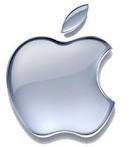
Apple marketing mix (Apple’s 7Ps of marketing) comprises elements of the marketing mix that consists of product, place, price, promotion, process, people and physical evidence. Product Element in Apple Marketing Mix (Apple 7Ps of Marketing) In 2010, before he became chief executive officer, Tim Cook claimed that Apple’s all products could fit on a single table. At that time the multinational technology company produced only 14 products.[1] It is different now. It has been noted that “no longer do the barista and the corporate executive use the same iPhone — today, there are high-end models, consumer models, and a long line of old products the company keeps around to fill every niche and price point.”[2] Today, Apple designs, manufactures and sells technological devices such as IPhone smartphones, IPad tablets, Mac desktop and portable personal computers and iPod digital music and media players. Moreover, the company generates revenues via iTunes and the iTunes Store, Mac App Store, iCloud and Apple Pay. Apple also develops iOS and OS X operating system software and a range of application software such as iLife and iWork. Lastly, Apple Corporation designs, manufactures and sells own and third-party Mac-compatible and iOS-compatible accessories, including Apple TV, headphones, cases, displays, storage devices and various other connectivity and computing products and supplies[3]. Apple also sells third-party digital content and applications through iTunes Store®, App Store®, Mac App Store, TV App Store, iBooks Store™ and Apple Music®. Table 1 below illustrates the full range of Apple products, their brief descriptions and additions in 2023: Product Categories Description Additions in 2020 iPhone A line of smartphones based on iOS operating system iPhone SE, iPhone 12, iPhone 12 Pro, iPhone 12 Pro Max, iPhone 12 mini Mac A line of personal computers based on macOS operating system 16-inch MacBook Pro, 13-inch MacBook Pro, 27-inch iMac iPad…
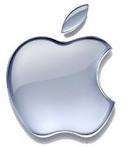
Apple marketing strategy is based on the founder Steve Jobs’s philosophy that customers do not always know what they want. Accordingly, instead of conducting marketing researches to identify customer needs and wants, the multinational technology company prefers to install innovative features and capabilities in their products, making customers to want Apple products. Under the leadership of Tim Cook since 2011 certain aspects of the business such as management style and company’s stance towards CSR have changed. However, the dismissal of marketing research remains to this day. Apple marketing strategy expresses the brand in minimalist, yet highly efficient ways. The world’s largest IT company by revenue is one of the first companies to successfully associate the brand image with being innovative, rebellious and non-conformist. Apple 7Ps of marketing is marked with a particular focus on the product element of the marketing mix and the company’s segmentation targeting and positioning initiatives are aimed at targeting users of premium products. Moreover, marketing communication mix of Apple Inc. places greater emphasis on print and media advertising and personal selling in Apple Stores and the company rarely uses sales promotions as part of its marketing strategy. Generally, Apple marketing strategy integrates the following: 1. Focusing on attractive value proposition. Apple’s value proposition is “beautiful design that works right out of the box with ever-smaller packaging”[1] The world’s largest IT company by revenue has been able to avoid price wars with competitors by emphasizing its unique value proposition in its marketing communication messages. Apple is a unique company in a way that it is a design firm, a media platform, a publishing company, a software powerhouse and a computer manufacturer – all at the same time. Such a position allows the company to communicate its value proposition to target customer segment in a cost-effective manner.…

WeWork marketing strategy is based on the following principles: 1. Effective use of social media marketing. The global flexible workspace provider efficiently uses social media marketing through viral marketing, localized Facebook ads appealing to the needs and wants of the local customer segment. Furthermore, there are many YouTube videos with positive customer testimonials for using WeWork co-working spaces with positive implications on the brand image. 2. Celebrity endorsement. Although the leadership style of the co-founder and former CEO Adam Neumann had proved to be devastating for the company, he was able to engage in celebrity endorsement in cost-effective manner. Celebrities such as Drake, Ashton Kutcher and Hugh Jackman were spotted in WeWork headquarters with positive implications to the brand image. The co-working giant continued with celebrity endorsement even after the departure of Neumann. 3. Focus on the product and place. Within the framework of 7Ps of marketing WeWork focuses on product and place elements of the marketing mix to a greater extend compared to other elements. The global flexible workspace provider offers workspace as a service – creatively designed, furnished, flexible and without long-term commitments. This is the unique selling proposition for WeWork. The co-working giant has a network of 756 locations worldwide, including 277 locations in the US as of December 2021. 4. Effective market segmentation and positioning. The co-working giant uses functional and multi-segment positioning techniques and targets customers mainly in urban areas in 38 countries worldwide. In terms of occupational segmentation criteria WeWork targets self-employed individuals, professionals, senior managers, executives and business owners. 5. Integrated use of marketing communication mix. The co-working and office space operator uses several marketing communication channels such as print and media advertising, sales promotions, events and experiences and public relations in integrated way to communicate marketing message to the target customer segment.…
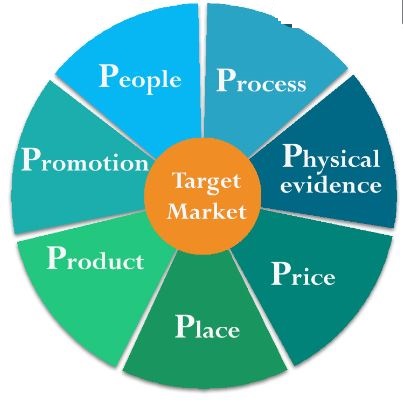
Marketing mix, also known as 7Ps of marketing includes individual marketing elements that form overall offer to customers. The concept was developed by marketing professor E. Jerome McCarthy and originally published in his book Basic Marketing. A Managerial Approach in 1960.[1] Initially the concept consisted of 4 Ps – product, place, price and promotion. As the field of marketing became more sophisticated additional 3 Ps – people, process and physical evidence were added by Bitner and Booms[2]. The additional 3Ps are also called ‘service mix Ps’, because they integrate important aspects of services into the marketing mix concept. Furthermore, in 2007 Larry Londre introduced another 2Ps – Partners/Strategic Alliances and Presentation. However, this latest addition has not been widely accepted among marketing researchers and practitioners, thus here we will stick to 7Ps of marketing. Marketing mix is a useful tool to tailor your products and services to the needs and wants of the target customer segment, but it is not a one-stop-shop for developing a comprehensive marketing strategy. A successful marketing strategy needs to address a range of other frameworks such as segmentation targeting and positioning, marketing communication mix and others. Product Element in 7Ps of Marketing Product or a service is the starting point in the marketing mix. Companies need to take into account the following variables, among others when developing new products: In what type of packaging is the product offered? Are products offered in various colours sizes etc.? What design and technical features differentiate the product in the competition? Are products durable and robust enough to appeal to the needs and wants of the target customer segment? What are the levels of quality and functional performance? Can he product be customized to individual users? Is the product easy to use and maintain? Is the product upgraded regularly? Place…
Marketing can be defined as the activity, set of institutions, and processes for creating, communicating, delivering, and exchanging offerings that have value for customers, clients, partners, and society at large.[1] In simple terms, marketing is the action of promoting and selling of products and services. The most popular marketing concepts and tools include the following: Marketing Strategy 7Ps of Marketing Segmentation, Targeting & Positioning Marketing Communication Mix Brand Essence Wheel Brand Development Process Relationship Marketing [1] Definitions of Marketing (n.d.) American Marketing Association, Available at: https://www.ama.org/the-definition-of-marketing-what-is-marketing/

Starbucks marketing strategy is based on the following principles: 1. Focus on product and place elements of the marketing mix. Marketing mix comprises 7 elements – product, place, price, promotion, process, people and physical evidence. Businesses choose to concentrate on one or two elements as their sources of competitive advantage according to their business strategy. Accordingly, Starbucks marketing mix focuses on product element through offering foods and beverages of high quality and providing respective level of service. Place element of the marketing mix represents an additional source of Starbucks competitive advantage in a way that stores are usually located at high-traffic, high-visibility locations. 2. Customer segmentation and targeting premium customer segment. The world’s largest coffee retailer targets males and females from middle and upper class who can afford expensive prices of Starbuck products for regular consumption. The company uses mono-segment, adaptive and standby product positioning techniques in order to appeal to the needs and wants of the target customer segment. 3. Integrated application of multiple marketing communication channels. Starbucks marketing communications mix utilises a number of marketing communications channels such as print and media advertising, sales promotions, events and experiences, public relations and direct marketing in an integrated manner to communicate the marketing message to the target customer segment. 4. Consistent increase of the marketing budget to implement the above measures and initiatives. Starbucks has been consistently increasing its marketing budget for a number of years. Starbucks marketing expenses totalled USD305.1 million, USD258.8 million and USD245.7 million in fiscal 2021, 2020 and 2019, respectively. The Seattle-based coffee chain spends this budget to communicate its marketing message to the target customer segment in creative ways. 5. Extensive use of celebrity endorsements. Efficient use of celebrity endorsement is one of the cornerstones of Starbucks marketing strategy. The world’s largest coffeehouse chain…
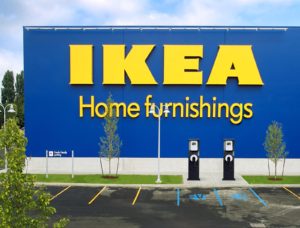
IKEA marketing strategy is based on sophisticated customer research and market research. “IKEA actually sends design experts into people’s homes to listen to their concerns and provide feedback. This allows IKEA evangelists to make marketing decisions based on people’s real-life experiences rather than just surveys or data.”[1] Accordingly, it can be argued that marketing strategy of IKEA is proactive, rather than reactive. In 2018, the world’s largest furniture retailer shifted its marketing focus from rooms to product innovation. The ‘magic’ blue bag has been placed at the core of marketing strategy of IKEA and the latest ads have been designed to illustrate how the addition of just a few innovative items can transform the home for the better. Generally, IKEA marketing strategy integrates the following: 1. Focusing on product and price elements of the marketing mix. Specifically, IKEA attempts to offer the greatest range of products for the lowest cost. Economies of scale play an instrumental role in achieving competitive prices. The Swedish furniture chain offers mixed-and-matchedproducts accommodating unique style and needs of each customer. Reusable durability is another important feature of IKEA products. Along with product and price, additional elements of marketing mix, also known as 7Ps of marketing include place, promotion, process, people and physical evidence. 2. Using mono-segment, adaptive and aesthetic types of product positioning. The furniture retailer targets cost-conscious customer segment that prefers to get value for money they pay. Accordingly, IKEA has adapted the lowest costs of its products along with the widest range as the unique selling proposition of the brand. The home improvement and furnishing chain continually adapts its products to changing customer needs and wants on the basis of its proven ‘democratic design’ concept. 3. Integrating several channels of marketing communication such as print and media advertising, sales promotions, events and experiences,…

McDonald’s marketing strategy is based on the following principles: 1. Think globally, act locally. McDonald’s is a truly global company with 40,031 restaurants in in119 countries.[1] The fast food chain is famous for standardisation of a wide range of business processes. Specifically, the company attempts to adjust its menu, as well as, restaurants settings to the tastes and preferences of local consumers. For example, it serves McSpaghetti in Philippines, Chicken Parm in Australia, Cookie and Cream Pie in Malaysia, Gracoro Burger in Japan and the list goes on. 2. Extensive focus on print and media advertising. The fast food giant focuses on print and media adverting component of marketing mix to a greater extent compared to other components. Specifically, McDonald’s advertising costs totalled USD 82.9 million, USD 329.2 million and USD 81.5 million for 2021, 2020 and 2019 respectively.[2] The marketing message attempts to associate the brand with enjoying tasty food and sharing goods moments with loved ones. 3. Targeting the widest range of customer segment. McDonald’s segmentation, targeting and positioning strategy attempts to appeal to the needs and preferences to the wide range of customers in terms of geographic location, demographic, behavioural, as well as, psychographic traits. 4. Cost leadership strategy. Within the framework of marketing communication mix (also known as 7Ps of marketing) McDonald’s prioritizes price over other elements. In fact, enjoying tasty food served in short duration of time is fast food chain’s unique selling proposition. The tasty food served by the company is often not a healthy one, but this is a separate issue impacting the brand. McDonald’s Corporation Report contains the above analysis of McDonald’s marketing strategy. The report illustrates the application of the major analytical strategic frameworks in business studies such as SWOT, PESTEL, Porter’s Five Forces, Value…
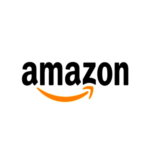
Amazon marketing strategy relies on the following four pillars: 1. Offering the widest range of products. The largest internet retailer in the world by revenue offers hundreds of millions of products. The wide range of product it offers has earned the online retailer the moniker The Everything Store. 2. Using customer-friendly interface. The tech giant has an advanced interface that integrates personalized recommendations and recent browsing history, among others. Ever-improving user interface is the result of the company’s focus to become Earth’s most customer-centric company. 3. Scaling easily from small to large. The e-commerce and cloud computing company has experience and competence in scaling from small to large. This factor plays in instrumental role exploring new business segments. Scaling from small to large has allowed the online retail behemoth do disrupt increasing ranges of industries such as retail, transportation, entertainment and now industrial distribution. 4. Exploiting affiliate products and resources. Up to date, the tech giant has taken a full advantage of affiliate programs, products and resources to contribute to the bottom line of the business. Amazon marketing strategy integrates a number of targeted online marketing channels, such as Associates program, sponsored search, social and online advertising, television advertising, and other initiatives. Generally, Amazon marketing strategy is based on the following principles: Amazon 7ps of marketing mainly focuses on product and place elements of the marketing mix. Offering hundreds of millions of products in the USA alone, Amazon product range is the widest among online and offline retailers. Moreover, the company is able to offer its products for competitive prices due to massive cost savings based on online nature of business operations. Amazon segmentation targeting and positioning practices are associated with targeting the widest customer segment. The retail giant does this with the application of multi-segment, adaptive, anticipatory and stop-gap…
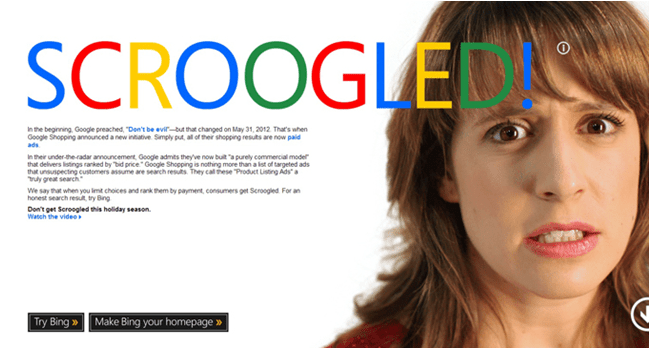
Since the appointment of Satya Nadella as CEO, Microsoft marketing strategy has changed to become less ‘hostile’ abandoning kinds of advertising that ‘attacked’ competitors in a direct manner. For example, a marketing campaign known as ‘Scroogled!’ launched in 2012 informed about Google’s decision to display paid advertisements to search results related to shopping. ‘Scroogled’ was launched to ensure the shift of some Google users to use Microsoft’s Bing search engine, but Nadella stopped this and some other similar campaigns as an attempt to improve the image of the company.[1] ‘Scroogled’ marketing campaign as illustration of old-style Microsoft marketing strategy In other words, since his appointment on the top job, Satya Nadella has been focusing on humanising the brand and taking a customer-centric approach with direct implications on the marketing strategy of Microsoft. Microsoft sales and marketing expenses amounted to USD 17,469 billion, USD 15,461 billion and USD 14,635 billion for the fiscal years of 2018, 2017 and 2016 respectively . In 2018 the tech giant’s sales and marketing expenses increased USD2.0 billion or 13% compared to the previous year.[2] Microsoft marketing strategy is based on the following principles: 1. Investing in the communication of marketing message through various marketing communication channels in an integrated manner. The technology giant uses a range of marketing communication channels such as advertising, sales promotion, events and experiences, public relations, direct marketing and personal selling in an integrated way to communicate its marketing message to its target customer segment. 2. Focus on product element of the marketing mix. Microsoft 7Ps of marketing focuses on the product element of the marketing mix to a greater extent compared to other elements. Accordingly, the multinational technology company has accepted high level of user convenience of its products and services as unique selling proposition associated with the brand. 3.…
